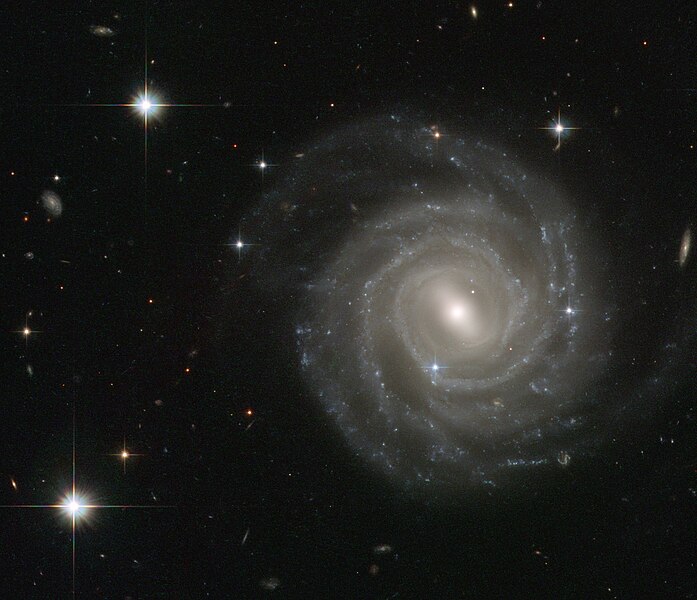Archivo:UGC 12158.jpg
Apariencia

Tamaño de esta previsualización: 697 × 600 píxeles. Otras resoluciones: 279 × 240 píxeles · 558 × 480 píxeles · 893 × 768 píxeles · 1190 × 1024 píxeles · 2381 × 2048 píxeles · 2790 × 2400 píxeles.
Ver la imagen en su resolución original (2790 × 2400 píxeles; tamaño de archivo: 3,94 MB; tipo MIME: image/jpeg)
Historial del archivo
Haz clic sobre una fecha y hora para ver el archivo tal como apareció en ese momento.
| Fecha y hora | Miniatura | Dimensiones | Usuario | Comentario | |
|---|---|---|---|---|---|
| actual | 14:39 20 dic 2010 |  | 2790 × 2400 (3,94 MB) | Jmencisom | {{Information |Description={{en|1=The galaxy captured in this image, called UGC 12158, certainly isn’t camera-shy: this spiral stunner is posing face-on to the NASA/ESA Hubble Space Telescope’s Advanced Camera for Surveys, revealing its structure in f |
Usos del archivo
La siguiente página usa este archivo:
Uso global del archivo
Las wikis siguientes utilizan este archivo:
- Uso en af.wikipedia.org
- Uso en ar.wikipedia.org
- Uso en azb.wikipedia.org
- Uso en bn.wikipedia.org
- Uso en bs.wikipedia.org
- Uso en ca.wikipedia.org
- Uso en cs.wikipedia.org
- Uso en cy.wikipedia.org
- Uso en de.wikipedia.org
- Uso en en.wikipedia.org
- Uso en en.wikiquote.org
- Uso en fr.wikipedia.org
- Uso en ga.wikipedia.org
- Uso en hr.wikipedia.org
- Uso en hy.wikipedia.org
- Uso en it.wikipedia.org
- Uso en km.wikipedia.org
- Uso en ko.wikipedia.org
- Uso en la.wikipedia.org
- Uso en mk.wikipedia.org
- Uso en nl.wikipedia.org
- Uso en pl.wikipedia.org
- Uso en ro.wikipedia.org
- Uso en sk.wikipedia.org
- Uso en tr.wikipedia.org
- Uso en vi.wikipedia.org
- Uso en www.wikidata.org
- Uso en zh-yue.wikipedia.org
- Uso en zh.wikipedia.org

